R-22 Supply and Demand Will Affect Your Comfort
What is R-22?
R-22 is a type of refrigerant used in air conditioners and heat pumps. Refrigerant is also referred to as Freon. EPA (Environmental Protection Agency) regulations regarding R-22 may affect your wallet and comfort. If you are not sure what type of refrigerant your air conditioner uses, an EPA certified HVAC technician can determine that for you. Most air conditioning units and heat pumps that were manufactured and installed prior to 2010 were built to use R-22.
EPA Action
R-22 was introduced in the 1950’s. Based on research, the EPA reported it to be an ozone-depleting substance when leaked into the atmosphere. In effort to support environmental preservation, the phase out of R-22 was launched several years ago. The EPA limited production on R-22 causing the prices to increase due to the lack of supply. The phase-out project is expected to be completed by 2020, which is fast approaching. If your equipment experiences a refrigerant leak, due to reduced supply, the cost to have it repaired will likely be doubled or tripled compared to past repairs. As of 2020 no more R-22 will be manufactured.
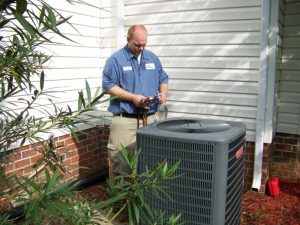 Simple Solution
Simple Solution
Be proactive and mindful of our environment. . If you have equipment with R-22, start planning for the replacement. Newer manufactured equipment is commonly built to use R410, a gas that is safer for our environment. R410 is in ample supply and less expensive. Upgrading your equipment will save you money. Buying new will give you a return on your investment based on new equipment technology providing higher efficiency. System replacement quotes are free when you schedule an appointment with a Kellam Mechanical Comfort Consultant.
http://kellammechanical.com/new-heating-cooling-system-quote-request/
AIR CONDITIONING AND HEATING SYSTEM ONLINE SHOPPING
Technology has launched the shopping experience into a new level of convenience. Household internet shopping can include stocking up on toilet paper, baby food, light bulbs, cereal, clothes, kitchen sinks and even air conditioners or furnaces; these items can be delivered to your home with the touch of a button. Buying household basics online makes sense and frees up your around town errand time, which is valuable. However, purchasing HVAC equipment or parts online is not as cost effective as it seems. Air conditioning and heating system online shopping could cost 3x more money than purchasing the parts or equipment and labor directly through a contractor.
If you buy online and have a tradesman install it, the tradesman is not going to warranty a part he did not provide. After installation, if the part or equipment fails, there are more costs involved to diagnose and repair. Your choices are to pay the tradesman again to repair it or replace it with his or her stocked part at an additional fee. Or pay the tradesman to remove it so you can send it back to the supplier, wait for the new part to arrive, then call the tradesman back to repair it and pay him again. During this wait, you are likely inconvenienced and uncomfortable. When a contractor supplies parts and equipment, a warranty is included to cover potential failures for labor and parts. Contractors have established relationships with local suppliers for access to parts for a variety of manufacturers. Some parts and equipment installations require permits and inspections. Repairs and installations involve specialized tools for proper wiring, certifications, gas piping or proper refrigerant pressure readings, which should be followed with safety measures and city code compliance. There are pros and cons when purchasing online when you do not possess the skillset to install:
Cons: Pros:
-Does not include installation -Initial savings on product
 -Does not include warranty
-Does not include warranty
-Does not include code compliance
-Does not include EPA compliance
-Does not include safety measures
-Does not include guarantee right product was purchased
-No direct relationship with the supplier
-If part fails, have to remove it, return it, pay tradesman again
A $13 air conditioning capacitor online is not as simple as ordering a light bulb and screwing it into the fixture. The correct size of the capacitor needs to be obtained, correct installation and proper benchmark readings should be achieved for it to work properly. Mini-split heat pumps can be found online for $1,300.00 including shipping. Now what? Did you get a load calculation, order the right equipment size, line sets or permits? A skilled professional may charge $130 for a capacitor repair. A tradesman may charge $4,200 to install a mini-split system. It is not just about the value of the equipment or part online, it is the value of the skilled professional, city code compliance, inspections, EPA regulations, warranty, proper installation, achieving safe benchmark readings, convenience of his/her office on wheels, stocked parts and carrying a business license and insurance.
Skill is a developed ability. Tradesmen deliver comfort with their repairs and installations based on their training and have earned respect for their knowledge and education. For those DIY readers, be proud of your skill. It is valuable to be able to repair, manage and maintain your own household projects. If you do not possess the skills, the value of a skilled tradesman outweighs online shopping. When doing air conditioning and heating system online shopping, click on a local contractor website instead of the big box stores. If you need a skilled tradesman, schedule here:
Why won’t my air conditioner cool below 80?
It is so hot outside, why won’t my air conditioner cool below 80 degrees when I need it to? Hot days drive home owners directly to the thermostat to punch that “cool me down” button from 75 degrees to 70 degrees. After an hour or so, with no noticeable improvement, back to the thermostat, to discover the temperature has not changed comfort levels inside. On hot days that reach close to 100 degrees, you may discover warmer indoor temperatures. Generally systems are designed to perform up to 20 degrees below outdoor temperature readings. Extremely hot days will also run your air conditioner for long periods of time. Dropping the thermostat way down dramatically may not be the solution.
Here are some tips to keep your home more comfortable and efficient in hot summertime Virginia coastal communities:
Change your filters monthly for better airflow and fewer failures
Have system annual maintenance to keep coils clean and system operating efficiently
Make sure outdoor equipment is free from debris
Close window, doors and blinds
Dry clothes during cooler times of day
Avoid running dishwasher on dry cycle, suggest air dry
Minimize stove/oven use
It could take 4-6 hours for your system to satisfy the thermostat setting on extremely hot days or post repairs. If your home does not cool down over night, call to schedule a qualified HVAC technician to troubleshoot the system. There are many potential parts that could fail after your system has been running many hours consistently.
What to do: Contact Kellam Mechanical to schedule a skilled technician to properly and thoroughly diagnose your failure to present professional solutions. http://kellammechanical.com/heating-cooling-maintenance-appointment/
757-430-0358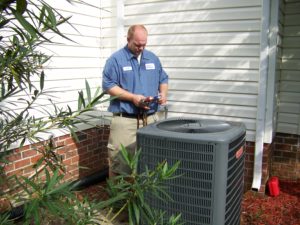
AIR CONDITIONING CONDENSTE DRAIN LINE CLOGS
Air Conditioning condensate clogged drain lines are common in our humid Tidewater region and can cause costly water damage. It is important to keep your air conditioner regularly maintained to avoid this inconvenience. Drain lines clog when dust, dirt, algae, insects, grime, rust or insulation settles in the drain pipe. This causes water to back up at your indoor air handler equipment which overflows the drip pan and potentially leak through your ceilings, floors or walls. It can also allow for bacteria, mold and mildew to grow, circulating spores through your ductwork, affecting your breathing space. It is advised to turn your system off, then call a professional to clear the drain to prevent further home damage and system failure.
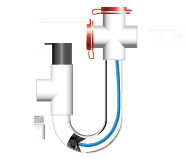 Consider preventing this inconvenience:
Consider preventing this inconvenience:
- Invest in an annual HVAC maintenance program. Kellam Mechanical loves the annual maintenance program since it pays for itself through energy savings, program benefits and discounts. Drain lines are inspected at each visit and cleared when there are signs of clogs.
- Schedule a professional technician install a float switch and EZ trap to automatically shut your system off when water is detected backing up.
Are you a DIY nut? Attach a wet/dry vacuum to the ¾ PVC primary drain line that exits the exterior of your house located close to ground level near your outdoor air conditioning or heat pump equipment. Ensure your vacuum has a good seal for effectiveness. Power up for 3-5 minutes. Examine the contents that were obstructing the drain line. You might be surprised with the lovely remnants. However, if you are DIY nut, the leftovers probably won’t faze you. Now your breathing air is cleaner and your system is in better operating status. If no junk has been extracted and you still have system failure symptoms, you may need further trouble shooting from a qualified technician.
If you have not thought about your comfort equipment maintenance in a while, now is the time! All mechanical equipment needs regular maintenance, so spending the money to maintain it is saving more than repair costs! Know someone who needs equipment maintenance? Tell ‘em Kellam!
AIR CONDITIONING REFRIGERANT LEAKS
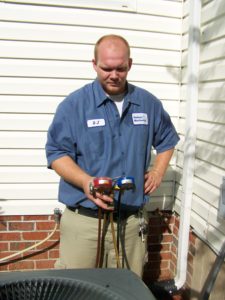 As the summer heat progresses, homeowners discover their air conditioners are working longer and harder, which can lead to failures. The harder and longer their equipment runs, the more likely it will demand attention to be maintained. A common cause of failure is refrigerant leakage. Temperatures higher in your home incapable of satisfying the thermostat setting is a probable symptom related to refrigerant leaking. Properly trained and certified technicians can diagnose this issue quickly and simply add more refrigerant based on the measurement their gauges determine. This may just be a temporary fix, so it is advised to perform a leak test using bubble soap solutions or an electronic leak detector to pinpoint the leak location. Leak tests can be time consuming dependent on the leak location and size. We recommended performing the repair in addition to recharging the system with the proper level of refrigerant per the manufacturer’s specifications. It is important that the technician is EPA certified to ensure refrigerant is properly handled and complying with regulations. There are several causes for refrigerant leaking:
As the summer heat progresses, homeowners discover their air conditioners are working longer and harder, which can lead to failures. The harder and longer their equipment runs, the more likely it will demand attention to be maintained. A common cause of failure is refrigerant leakage. Temperatures higher in your home incapable of satisfying the thermostat setting is a probable symptom related to refrigerant leaking. Properly trained and certified technicians can diagnose this issue quickly and simply add more refrigerant based on the measurement their gauges determine. This may just be a temporary fix, so it is advised to perform a leak test using bubble soap solutions or an electronic leak detector to pinpoint the leak location. Leak tests can be time consuming dependent on the leak location and size. We recommended performing the repair in addition to recharging the system with the proper level of refrigerant per the manufacturer’s specifications. It is important that the technician is EPA certified to ensure refrigerant is properly handled and complying with regulations. There are several causes for refrigerant leaking:
- Mother Nature: Coastal environments can contribute to advanced coil damage with sand and salt water corrosion. Storms are not friendly with air conditions or heat pumps delivering debris in the outdoor units, causing airflow restrictions and corrosion. Living on or the near coastal regions can expedite equipment aging and shorten the equipment life. Virginia Beach resort area, Croatan and Sandbridge specifically have seen equipment last only 5-7 years when not regularly maintained or coil coated. Air conditioners and heat pumps inland should experience a life span of 10-12 years. Copper coils are also subject to microscopic cracks from nature’s affects of formicary corrosion.
- Installation: Brazing joints incorrectly can create pinhole leaks that could likely cause slow leaks, taking several years to notice the uncomfortable affects.
- Manufacturer Processing: improper welding, packing or shipping may create holes as well.
- Inadvertent Damage: Nails through the line set in the wall when hanging wall décor, outdoor project mishaps: weed eating too close to equipment damaging lines, standing on equipment attempting to work on exterior improvements or materials/tools falling in unit causes damage, outdoor kids activities, power washing or animals/pets digging or clawing at equipment. Even an animal’s urine can corrode the components.
- Huffing: It has been reported from enforcement agents that teens have been caught huffing refrigerant to get high. This is dangerous and can cause brain damage, lung damage or even death. Refrigerant locking caps are a great solution to prevent refrigerant theft and save lives.
The cost of refrigerant has fluctuated tremendously over the past several years for R-22. We have seen R-22 rise to approximately $190 per pound for the consumer in the past 4 years. R-22 operated equipment is no longer manufactured, so there is a limited supply controlled by the EPA, so costs have risen. More efficient equipment has been designed in recent years requiring R-410 which is a more environmentally friendly product and in ample supply.
Best solutions to prevent discomfort and inconvenience due to air conditioning failures:
- Invest in an annual maintenance agreements with a qualified HVAC contractor. Research shows that annual maintenance reduces failure rates and saves you up to 30% on heating and cooling energy bills annually.
2. Change your filters monthly. Dirty filters can restrict airflow and cause system failure.
GO GEOTHERMAL
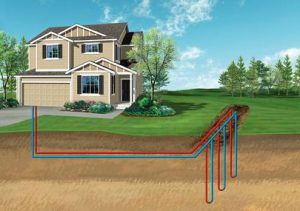 Geothermal technology delivers incredibly high efficient comfort; up to 80% more efficient than a conventional system. It uses the earth’s constant temperatures using wells 6 feet below the surface to heat and cool your space. These highly efficient systems use electricity to move air, not to produce it. According to the Environmental Protection Agency geothermal systems are “the most energy efficient, environmentally clean, and cost effective space conditioning system available today.” Geothermal systems do not use fossil fuels, so there are no combustible gas emissions, which reduces your carbon footprint and eliminates harmful health effects. Statistics also prove that Geothermal equipment has a lower failure rate than heat pumps, gas package units, air conditioners or furnaces. Installing a geothermal heating and cooling system in your home or business has many benefits.
Geothermal technology delivers incredibly high efficient comfort; up to 80% more efficient than a conventional system. It uses the earth’s constant temperatures using wells 6 feet below the surface to heat and cool your space. These highly efficient systems use electricity to move air, not to produce it. According to the Environmental Protection Agency geothermal systems are “the most energy efficient, environmentally clean, and cost effective space conditioning system available today.” Geothermal systems do not use fossil fuels, so there are no combustible gas emissions, which reduces your carbon footprint and eliminates harmful health effects. Statistics also prove that Geothermal equipment has a lower failure rate than heat pumps, gas package units, air conditioners or furnaces. Installing a geothermal heating and cooling system in your home or business has many benefits.
1. It has a life span twice that of a conventional system.
2. It is less expensive to install and operate than 2 conventional systems replacements.
3. It is the highest efficient equipment, saving bucket loads on energy usage.
4. It is earth friendly.
5. Increases your property value.
6. Fewer repairs.
When considering replacing your Geothermal system or converting to Geothermal, call a qualified contractor. Kellam Mechanical employs technicians that are certified through Geothermal specific training classes to install, repair and maintain Geothermal equipment. Converting to Geothermal is a smart choice. Kellam Mechanical offers free quotes. Now is the best time to live greener and benefit from a time sensitive tax credit of 30% that expires 12/31/16.
KELLAM MECHANICAL NATIONALLY RECOGNIZED
 Kellam Mechanical opened April 1, 1995. For 21 years Scott Kellam has dedicated his time and energy into the business he loves because he loves the HVAC industry. As a teenager in 1977, he learned the trade from his father and grandfather in their family owned and operated Heating, Air Conditioning and Electrical business and loved working there until he decided to start his own adventure. When you ask him what else he would do for a living if he were not in the HVAC business, he says with a puzzled look as if there is no other possibility “Nothing, I am right where I have always wanted to be.” Bringing comfort to the families in the Tidewater area of Virginia, where he was born and raised has always been Scott’s focus. Our 4 distinct coastal seasons have kept him quite busy through the years. Making customers comfortable and happy is only half of his goal. Making his family of employees happy and comfortable is the balance. There are many details involved in making a business successful and Scott Kellam has worked hard to balance all of them. With 25 employees to help Kellam Mechanical deliver quality customer service, he has an excellent support system. In addition to running a locally owned business for 21 years, Scott has also been heavily involved in the Virginia Beach community. He loves lending his time volunteering with The Virginia Beach Clean Community Commission, The Chesapeake Bay Foundation, The Virginia Beach Education Foundation and led the local Air Conditioning Contractors of America chapter as President from 2012-2014.
Kellam Mechanical opened April 1, 1995. For 21 years Scott Kellam has dedicated his time and energy into the business he loves because he loves the HVAC industry. As a teenager in 1977, he learned the trade from his father and grandfather in their family owned and operated Heating, Air Conditioning and Electrical business and loved working there until he decided to start his own adventure. When you ask him what else he would do for a living if he were not in the HVAC business, he says with a puzzled look as if there is no other possibility “Nothing, I am right where I have always wanted to be.” Bringing comfort to the families in the Tidewater area of Virginia, where he was born and raised has always been Scott’s focus. Our 4 distinct coastal seasons have kept him quite busy through the years. Making customers comfortable and happy is only half of his goal. Making his family of employees happy and comfortable is the balance. There are many details involved in making a business successful and Scott Kellam has worked hard to balance all of them. With 25 employees to help Kellam Mechanical deliver quality customer service, he has an excellent support system. In addition to running a locally owned business for 21 years, Scott has also been heavily involved in the Virginia Beach community. He loves lending his time volunteering with The Virginia Beach Clean Community Commission, The Chesapeake Bay Foundation, The Virginia Beach Education Foundation and led the local Air Conditioning Contractors of America chapter as President from 2012-2014.
Many business men work very hard for many years without recognition, but Scott Kellam is an exception. He has been blessed to receive recognition on the state and national level. On September 7, 2016 Scott Kellam received the Contractor of the Year award representing the state of Virginia through the Plumbing, Heating and Cooling Contractor Association. This was an incredible honor to be recognized for our state, but an even more prestigious award followed. On October 21, 2016 he was awarded the National Contractor of the Year through the PHCC Association. Scott Kellam graciously accepted the award in San Antonio, Texas. This was a memorable event and has inspired Scott to keep working hard at maintaining his reputable local Virginia Beach company.
Scott’s reaction to this acknowledgement: “I am honored to be considered a top leader of this industry and many thanks to our loyal customers and employees that have been along for the ride to catapult Kellam Mechanical above the average HVAC business”.
DIRTY…IS…EXPENSIVE!
Dirt is the #1 reason for cooling and heating system failure. Repairs can be expensive, therefore dirty is expensive! Clean is efficient. Efficiency saves money and reduces inconvenient failures.
Three dirty reasons to have a qualified technician clean your cooling and heating system annually:
- Dirty filters. Filters covered in dirt, dust, grime, pet dander, cigarette smoke, dead skin, bacteria, germs, hair, and more yucky stuff affect the airflow and operation of your comfort system . These restrictors can contribute to equipment breakdowns, leading to repair costs. It is recommended that you change your disposable filters or clean your electronic air cleaners monthly.
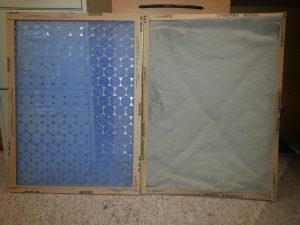
- Dirty coils. Your outdoor comfort system coil can collect dirt, grass, dust and yard debris, all of which can lead to excessive equipment stress, and in turn contributes to compressor and refrigerant repair costs.
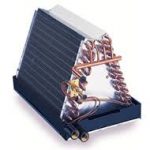
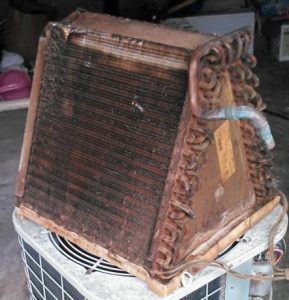
3. Unexpected, unwanted surprises. Other dirty things can make their way into your system, whether the equipment is located outside, in your closet, in the garage or in the attic. Service technicians have been surprised with some interesting critters during repair visits, from bugs stuck in the contactor which halts the equipment; mice chewing through ductwork causing air leakage, or dead in ductwork, which delivers decaying smells; squirrels that nest in attic air handlers; brown recluse spiders have been discovered in the outdoor unit; even a snake wrapped around an outdoor unit fan blade that caused the system to seize. Unless you are an outdoor wildlife fanatic, you might prefer a technician remove these critters, right?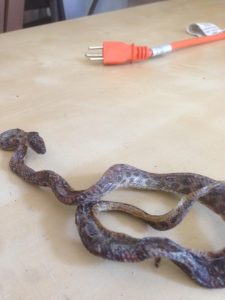
Annual maintenance creates efficiency, reduces failure rates and lengthens the life of your equipment. All benefits equal money saved. System components need attention regularly. Compressors are the heart of the system and the filters are like the lungs so these vital components deserve to be protected and cared for. Kellam Mechanical’s annual maintenance program pays for itself through energy savings, program discounts and benefits, so schedule your maintenance appointment now. Know someone who wants reliable indoor comfort that saves money while critter free? Tell ‘em Kellam!
HEAT PUMP ICED UP LIKE FROSTY THE SNOWMAN?
What is wrong with my heat pump? Is this normal?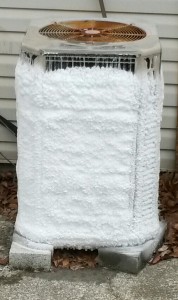
This is not normal and needs to be repaired. Your heat pump has 3 cycles:
1. Heating
2. Cooling
3. Defrost Cycle
In the winter months your heat pump transfers outdoor cold air into a warm, comfortable environment inside your home. However, when the temperatures outside drop below freezing, the moisture in the air freezes on your outdoor heat exchanger, creating an icy layer on the fins. Your heat pump senses the formed ice and engages the defrost cycle to protect the unit from damage and inefficient operation. The defrost cycle may take on average about 5 minutes, during which time you may experience cooler air flowing through your vents. Your system is designed with a timer and relay and most systems average defrost cycle about every 30 – 60 minutes in winter conditions. It is best to leave the system on to complete the cycle. A thin layer of ice is manageable by your system, but could indicate a failing part. A block as seen in the picture above is not manageable and indicates a part has failed. Without repair, your system will experience inefficiency and turn over to emergency heat using more energy, robbing you of your hard earned dollars and eventually fail. Some causes of an ice blocks forming are:
-refrigerant leak
-damaged or dirty coil (from lack of maintenance or covered with dirt, grass, leaves or other yard debris.)
-failed reversing valve
-wiring issue
-failed thermostat
-failed or improperly installed fan or motor
-failed relay
-failed capacitor
-failed relay
-failed or improperly installed defrost control board
Keep your comfort system maintained annually by a qualified technician to reduce failures and ensure efficient and proper operation. Always keep your outdoor unit free from debris and snow for proper airflow. Do not attempt to break the ice free because it could damage the fragile fins. Call a professional to repair it. 757-430-0358
DRASTIC CHANGES TO WATER HEATER STANDARDS…BE PREPARED!
Do you have a favorite appliance? Your water heater has to be up there on the top of that list, right? A hot shower starts the day just right to wake you up, unless it is showering you with ice cold water. Then it really wakes you up with a startle. How old is your water heater? Conventional water heaters act as one of the largest household energy consumers, behind your heating and cooling systems. According to Consumer Reports, your water heater eats up to 30% of your energy budget. Maintaining your water heater annually is a recommended practice that reduces failures and extends the equipment life. It is common for aging water heaters to rust and leak, so keep a close eye on yours, especially if it is located in your attic. Leaks can cause expensive and inconvenient damage to ceilings, walls and personal belongings. Flood-safe shut-off valves are also a smart solution. They detect leaks then activate the shut-off function to prevent unnecessary water overflow damage. The most common water heater size for single family homes is 40-50 gallons. Drain pans will not hold 50 gallons of water!
If your water heater is older than ten years, it is time to think about replacing it. Replacing your water heater often occurs when an aging unit fails, causing a small crisis when water is leaking or cold water is your only option until your new unit is installed. That process can create a hiccup in your daily routine since you have to coordinate a technician to diagnose, propose a replacement quote, order equipment and schedule installation. In addition, there is now one more step to consider. Manufacturers have recently changed the standard sizing, increasing the dimensions due to EPA increased energy efficiency requirements. This can be a challenge for homeowners with limited space or access to existing water heaters. Gas water heaters are now about 2 inches larger in diameter bringing it to about 22 inches. Most attic accesses are 22 ½” wide not including the frame. The height has increased about 4-6 inches. The best plan is to have a professional assess the specifications of your existing water heater and access, identify if it is gas or electric and measure the dimensions of your space to determine if a newly manufactured unit will fit. Then you can have a proactive quote for planning. With new dimensions on the market, the existing water pipe and exhaust connections may not match up. If it will not, it is recommended to prepare your closet or attic access for the new water heater dimensions. Kellam Mechanical has seen some applications where modifications to attic eaves, removing attic access frames, re-venting and re-piping were required to allow room for the new equipment. The manufacturers do not produce the units as small as the older models anymore and are no longer available to purchase.
The good news is energy-efficient technology has advanced so take advantage of welcomed savings when selecting a new water heater for your home. Tankless water heaters also provide a solution since they are smaller in size. Tankless water heaters deliver exceptional efficiency and since it heats water as used, not stored, there is an eternal supply of hot water. They also last about 20 years compared to the conventional water heater’s life expectancy of 10 – 15 years. Repairs are historically fewer, parts are easier to replace and the tankless model is less likely to leak. Its design is small, a welcomed space saver. Energy Star reports that tankless water heaters can deliver up to 34% energy savings using 86 gallons less daily equaling approximately $95 annual savings and $1,800 over the lifetime of the equipment.
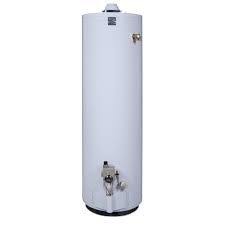 Water heaters are not the only appliance with larger dimensions…washing machines and refrigerators are on that list also, forcing homeowners to modify their laundry and kitchen spaces. I speak from experience, I just purchased a new washing machine in a few weeks ago and it does NOT fit in my beautiful custom built cabinets. So, my cabinet rebuild starts now. It seems bigger is better these days.
Water heaters are not the only appliance with larger dimensions…washing machines and refrigerators are on that list also, forcing homeowners to modify their laundry and kitchen spaces. I speak from experience, I just purchased a new washing machine in a few weeks ago and it does NOT fit in my beautiful custom built cabinets. So, my cabinet rebuild starts now. It seems bigger is better these days.
When scheduling your water heater repair or replacement, turn to a licensed and insured contractor. Kellam Mechanical dispatches NATE certified professionals to deliver code compliant service. Replacement quotes are free.
Click to schedule repair or replacement quote or call 757-430-0358 right now!
